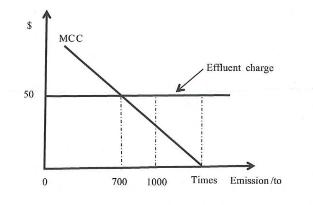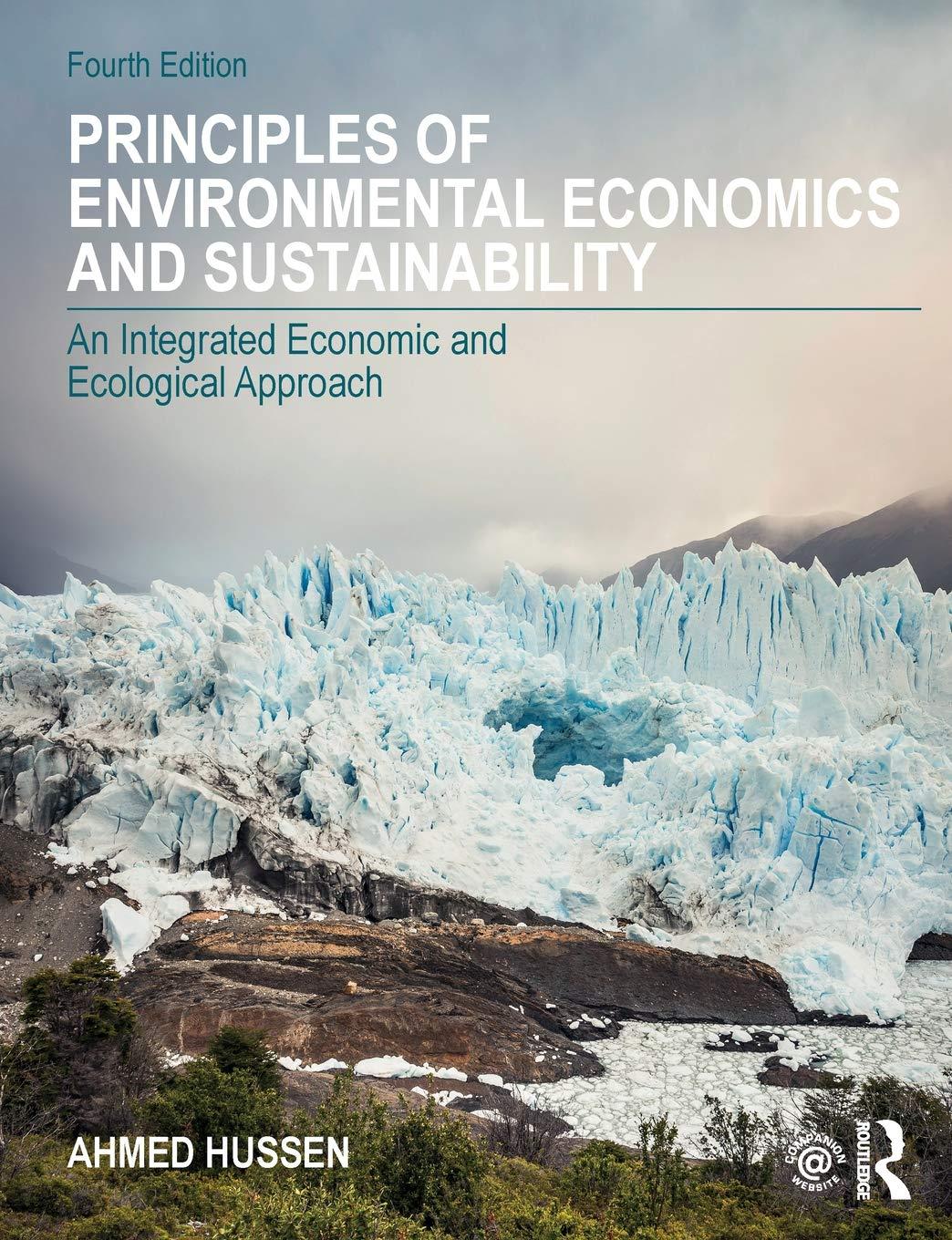Answer the following questions on the basis of the information given in Figure 5. 6. Data from
Question:
Answer the following questions on the basis of the information given in Figure 5. 6.
Data from Figure 5.6

a) How many units of pollutant would this firm (source) have emitted if an effluent charge was not imposed? Explain.
b) As shown above, the effluent charge is given to be \(\$ 50\) per ton emitted. Suppose the firm decided to clean up, using its technology, 500 units of waste. What will be the total cost to this firm in terms of what is paid in the form of tax and emission clean-up.
c) Demonstrate that this firm can lower its cost by increasing its clean-up operation from 500 to 800 units. How does this cost compare with the one in part (b)?
d) Would you advise this firm to increase its pollution clean-up operation to more than 800 units? Explain.
e) Based on this exercise, can you explain what exactly economists mean by the double-dividend future of effluent tax. Why is this important? Explain.
Step by Step Answer:

Principles Of Environmental Economics And Sustainability
ISBN: 9780815363545
4th Edition
Authors: Ahmed Hussen





